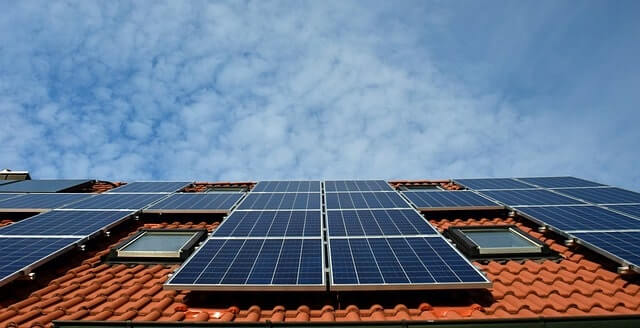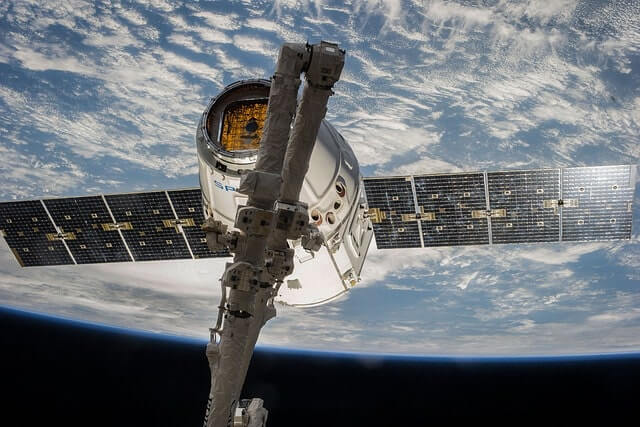Last updated on March 4th, 2025 at 02:16 pm
Knowing about the applications of solar panels is crucial for individuals and communities alike, as it empowers us to embrace sustainable and clean energy solutions. By understanding the diverse ways in which solar panels can be utilized, we can make informed choices that positively impact our environment, finances, and overall quality of life.
First and foremost, awareness of solar panel applications allows us to harness the power of the sun to generate electricity and reduce our carbon footprint. From residential rooftops to large-scale solar farms, solar panels offer a renewable energy alternative that helps combat climate change and mitigate the harmful effects of traditional fossil fuel consumption.
By reading this article, you will possess a panoramic understanding of how solar panels are transforming the way we live, work, and lead our lives.
Importance of solar energy
Solar energy has gained significant attention in recent years, and for good reason. It is a remarkable and abundant source of renewable energy that holds immense importance for both the environment and our daily lives.
First and foremost, solar energy is incredibly clean and environmentally friendly. Unlike traditional non-renewable energy sources such as fossil fuels, solar power generates electricity without emitting harmful greenhouse gases that contribute to climate change. By harnessing the sun’s energy, we can reduce our carbon footprint and combat the pressing issue of global warming.
One of the most enticing aspects of solar energy is its renewable nature. The sun is an everlasting source of energy, radiating an incredible amount of power that far exceeds our current needs. By capturing this abundant energy through solar panels, we can tap into an essentially limitless supply, ensuring a sustainable energy future for generations to come.
Solar energy is also highly versatile. It can be utilized in various ways, from generating electricity to heating water and even powering vehicles. Solar panels installed on rooftops or in solar farms convert sunlight into electricity, which can be used to power homes, businesses, and communities.
Additionally, solar thermal systems employ the sun’s heat to warm water for residential and commercial purposes, reducing the reliance on conventional heating methods. With advancements in solar technology, we can expect even more innovative applications in the future.
Another remarkable advantage of solar energy is its potential for decentralization. Traditional energy sources often require extensive infrastructure and centralized power plants to distribute electricity.
In contrast, solar power allows for decentralized energy production, enabling individuals and communities to generate their own electricity. This decentralization empowers individuals with energy independence, reduces vulnerability to power outages, and promotes a more resilient energy system.
Economically, solar energy offers substantial benefits as well. The cost of solar panels has significantly decreased over the years, making solar power increasingly affordable and accessible. By investing in solar energy, individuals and businesses can save on electricity bills in the long run, ultimately recouping their initial investment. Moreover, the growth of the solar industry has led to the creation of numerous job opportunities, driving economic growth and fostering a green economy.
In addition to its environmental and economic advantages, solar energy also plays a crucial role in promoting energy security. Unlike fossil fuels, which often involve geopolitical tensions and price fluctuations, solar energy is domestically available in most regions of the world. By reducing dependence on foreign energy sources, solar power enhances energy security and strengthens national resilience.
Important applications of solar panels
1. Residencial solar panel
Residential solar power is revolutionizing the way households in the United States meet their energy needs. By installing solar panels on rooftops, homeowners can tap into the abundant energy of the sun to generate electricity, reducing their dependence on the traditional grid and taking control of their energy future.
One of the most significant benefits of residential solar power is the potential for substantial cost savings. As the sun’s rays shine down on the solar panels, they convert sunlight into clean, renewable energy that can power your home’s appliances, lighting, and other electrical devices. By generating your own electricity, you can slash your monthly utility bills, freeing up more of your hard-earned dollars for other important expenses.
But the benefits don’t stop there. In fact, residential solar power offers a unique opportunity for homeowners to become energy producers themselves. Through net metering programs, excess electricity generated by solar panels can be fed back into the grid. This means that when your solar panels produce more electricity than your household requires, the surplus power is sent back to the utility company, essentially turning your electric meter backward. As a result, you earn credits for the electricity you contribute, which can offset any future electricity consumption from the grid. It’s like having your own mini power plant right at home.
Not only does residential solar power provide financial advantages, but it also allows homeowners to make a positive impact on the environment. Solar energy is clean and renewable, producing zero greenhouse gas emissions and reducing reliance on fossil fuels. By adopting solar power, you’re actively contributing to the fight against climate change and creating a more sustainable future for generations to come.
Furthermore, installing solar panels on residential rooftops is a smart investment. Not only does it add value to your home, but it also positions you at the forefront of the clean energy movement. Potential buyers are increasingly drawn to homes with solar power, recognizing the long-term savings and environmental benefits they offer. So, in addition to enjoying lower energy bills and reducing your carbon footprint, you’re also boosting the marketability and resale value of your property.

2. Commercial and industrial use
In the dynamic landscape of business and industry, harnessing the power of the sun is becoming a game-changer. Commercial and industrial solar power is transforming the way businesses in the United States meet their energy needs. By installing solar panels on rooftops or utilizing open land, companies can unlock the potential of clean, renewable energy, reaping a multitude of benefits that go beyond the bottom line.
One of the primary advantages of incorporating solar panels into business and commercial buildings is the significant reduction in operating costs. By harnessing the sun’s abundant energy, companies can generate clean electricity on-site, thereby reducing their reliance on traditional energy sources and utility bills. This allows businesses to allocate their financial resources towards other critical areas, fostering growth, and boosting profitability.
Beyond cost savings and sustainability, the integration of solar panels into commercial buildings can significantly enhance their architectural design. Solar panels can be seamlessly incorporated into the building’s facade, rooftop, or even as shading elements, adding an element of visual appeal and modernity. The incorporation of solar panels into the architectural design showcases a forward-thinking approach, setting the building apart from its peers and creating a positive impression among clients, employees, and the community.
Innovative design techniques such as building-integrated photovoltaics (BIPV) allow solar panels to serve dual purposes by acting as both energy generators and structural components. This integration enables businesses to leverage solar energy without compromising on aesthetics.
For example, solar panels can be used as sunshades, canopies, or glass facades, simultaneously harvesting clean energy and providing shade or insulation. Such creative applications demonstrate that sustainability and architectural elegance can go hand in hand, setting a new standard for commercial building design.

3. Utility-Scale Solar Power Plants
In the quest for sustainable energy solutions, utility-scale solar power plants have emerged as a game-changer, revolutionizing the way communities, cities, and entire regions meet their electricity needs. These colossal solar farms, comprising thousands of interconnected solar panels, have the capacity to generate clean, renewable energy on a massive scale, providing significant benefits to both the environment and the local economy.
One of the primary advantages of utility-scale solar power plants is their ability to supply electricity to a large number of consumers. These solar farms harness the power of the sun and convert it into electricity through vast arrays of solar panels. The electricity generated is then seamlessly integrated into the existing power grid, ensuring a reliable and consistent energy supply for communities. By producing electricity on such a large scale, utility-scale solar power plants can contribute significantly to meeting the ever-increasing demand for energy in a sustainable manner.
In addition to their environmental impact, utility-scale solar power plants have significant economic benefits for the communities they serve. These solar farms require land for installation, creating opportunities for rural and less-utilized areas to host renewable energy infrastructure. This can stimulate local economies through job creation, increased tax revenue, and new business opportunities. Solar power plants often require a skilled workforce for construction, operation, and maintenance, leading to employment opportunities and a boost in the renewable energy sector.
Moreover, utility-scale solar power plants can contribute to energy independence and grid stability. By diversifying the energy mix and reducing dependence on centralized power generation, communities and regions can become more resilient to disruptions in the energy supply. Solar farms act as decentralized sources of energy, reducing strain on the grid and enhancing energy security.
4. Off-Grid solar power systems
In remote areas where access to the traditional power grid is limited or nonexistent, off-grid power systems are a lifeline that brings reliable electricity to communities, improving their quality of life. These systems rely on solar panels as a crucial component, harnessing the power of the sun to generate clean and sustainable energy for homes, schools, healthcare centers, and other essential facilities.
Off-grid power systems serve as a beacon of hope, providing electricity to remote locations that would otherwise be in darkness. By capturing sunlight through solar panels, these systems convert it into electricity, which is then stored in batteries for use when the sun is not shining. This enables continuous access to electricity, even during the night or cloudy days, ensuring that vital services and activities can be carried out seamlessly.
One of the primary advantages of off-grid power systems is their ability to bring electricity to areas where grid access is limited. In rural or isolated communities, the absence of a reliable power supply can hinder education, healthcare, communication, and economic development.
Off-grid systems, powered by solar energy, bridge this gap, empowering communities and enabling them to thrive. Schools can have adequate lighting and power for educational tools, healthcare centers can refrigerate medicines and operate medical equipment, and households can power essential appliances, improving the overall standard of living.
5. Portable Solar Panels
In our increasingly mobile and connected world, portable solar panels have become indispensable companions for those on the go. These compact and lightweight solar panels are designed to power a range of portable devices, such as smartphones, tablets, laptops, camping equipment, and outdoor lighting. With their ability to harness the sun’s energy, these panels offer a convenient and sustainable charging solution, particularly in areas without access to electricity infrastructure.
Portable solar panels are a game-changer for individuals who rely on their electronic devices while on the move. Whether you’re hiking in the wilderness, camping in remote locations, or simply enjoying outdoor activities, these panels provide a reliable source of power for your essential gadgets. By capturing sunlight and converting it into electricity, portable solar panels enable you to charge your devices directly from the sun, eliminating the need for traditional power outlets or disposable batteries.
One of the primary advantages of portable solar panels is their convenience and portability. These panels are designed to be compact, lightweight, and easy to transport, making them ideal for travel and outdoor adventures. You can effortlessly pack them into your backpack or carry them in your camping gear, ensuring that you always have access to renewable energy wherever your journey takes you. This convenience empowers you to stay connected, capture memories, and navigate your way, all while reducing your environmental footprint.
6. Solar-powered water heating
Solar-powered water heating systems have emerged as a highly efficient and sustainable solution for meeting hot water needs in residential, commercial, and industrial settings. By harnessing the power of the sun, solar thermal panels capture sunlight and utilize it to heat water, offering a cost-effective and environmentally friendly alternative to fossil fuel-based heating methods.
Solar water heating systems are designed to provide a continuous supply of hot water while reducing reliance on traditional heating sources. The solar thermal panels, often installed on rooftops or other suitable locations, absorb sunlight and convert it into heat energy. This energy is then transferred to a water storage tank, where the heated water is stored for later use.
7. Agricultural applications
In the realm of agriculture, solar panels have emerged as a transformative technology, offering numerous benefits and opportunities for farmers and agricultural businesses. By harnessing the power of the sun, solar panels can be utilized in various agricultural settings to power irrigation systems, livestock farms, greenhouses, and other farming equipment. This integration of solar energy in agriculture not only reduces operating costs but also improves sustainability and promotes the usage of clean energy in the agricultural sector.
One of the primary applications of solar panels in agriculture is powering irrigation systems. Water is a vital resource for crop cultivation, and traditional irrigation methods often rely on electricity or fossil fuel-powered pumps. By using solar panels to generate electricity, farmers can power their irrigation systems using renewable energy. This not only reduces dependency on the grid or costly fuel sources but also lowers operational expenses, making irrigation more affordable and sustainable in the long run.
Solar panels also find extensive use in powering livestock farms. Livestock operations require electricity for lighting, ventilation, and other equipment. By installing solar panels, farmers can generate clean and reliable energy to meet these energy needs. This reduces reliance on traditional energy sources, lowers utility bills, and promotes a more environmentally friendly approach to livestock farming. Solar power can also be used to run automated feeding systems, water pumps, and other equipment, enhancing efficiency and reducing manual labor.
Additionally, solar panels can be used to power various farming equipment. From electric fences to machinery like tractors and milking systems, solar energy provides a renewable and cost-effective alternative to traditional fuel-powered equipment. This transition to solar-powered farming equipment reduces greenhouse gas emissions, decreases reliance on fossil fuels, and helps farmers save on fuel costs. It also promotes a quieter and more sustainable working environment, enhancing the overall efficiency and productivity of farming operations.
8. Transporation
Solar panels are revolutionizing the transportation industry, offering innovative solutions to enhance sustainability and extend the capabilities of vehicles. This renewable energy source is increasingly being integrated into various modes of transportation, particularly electric cars, to provide auxiliary power and extend their range. Additionally, solar-powered charging stations and solar roads are being developed to support sustainable transportation infrastructure.
One of the notable applications of solar panels in transportation is their integration into electric vehicles (EVs). Solar panels installed on the roofs or other parts of electric cars capture sunlight and convert it into electricity. This auxiliary power can be used to charge the vehicle’s battery or power auxiliary systems, such as air conditioning, lighting, or entertainment devices. By utilizing solar energy, EVs can reduce their reliance on grid electricity and increase their overall efficiency, resulting in extended driving ranges and reduced dependency on traditional charging infrastructure.
Moreover, solar roads are a groundbreaking concept in sustainable transportation. Solar roadways incorporate solar panels directly into road surfaces, harnessing the power of the sun to generate electricity. These solar roads have the potential to revolutionize transportation infrastructure by providing renewable energy for streetlights, traffic signals, electric vehicle charging, and even powering nearby buildings. Solar roads not only promote sustainability but also offer benefits such as improved road safety through built-in LED lighting and the potential for snow and ice melting capabilities.
9. Disaster Relief and Remote Installations
Solar panels play a crucial role in providing reliable and immediate access to electricity in disaster-stricken areas or remote locations where the traditional electricity supply is disrupted. In such challenging situations, portable solar kits and solar-powered generators become essential tools for emergency response, medical facilities, and temporary settlements, ensuring a reliable source of power.
During disasters, when power grids are damaged or non-existent, portable solar kits offer a lifeline by providing quick and easy access to electricity. These kits typically consist of compact and lightweight solar panels, battery storage, and inverters. They can be rapidly deployed to affected areas and set up to harness the power of the sun.
The solar panels capture sunlight and convert it into electricity, which is stored in batteries for later use. This stored energy can then be used to power essential devices and equipment, such as lighting, communication devices, medical equipment, and charging stations for mobile devices. Portable solar kits are designed for ease of use, making them highly accessible even in challenging circumstances.
In disaster situations, medical facilities require a reliable and uninterrupted power supply to operate critical equipment and provide essential healthcare services. Solar panels come to the rescue by providing a sustainable energy source.
Solar-powered generators can be deployed to power medical facilities, including field hospitals, clinics, and first-aid stations. These generators utilize solar panels to capture sunlight and convert it into electricity. The generated power can be used to operate life-saving medical equipment, refrigeration units for storing medicines and vaccines, lighting, and ventilation systems. The availability of solar power ensures that medical personnel can provide quality care to those in need, even in areas with limited or no access to the electricity grid.
In remote installations, such as research stations, mining sites, or military camps located in isolated areas, solar panels provide a reliable and sustainable source of electricity. These installations often require power for lighting, communication systems, equipment operation, and other essential needs. Solar panels can be installed on rooftops or on the ground, capturing sunlight and converting it into usable energy.
This off-grid solar power system eliminates the need for expensive and environmentally harmful diesel generators or long-distance power transmission lines. By harnessing solar energy, remote installations can achieve energy independence, reduce operational costs, and minimize their environmental impact.
10. Space applications
Solar panels play a pivotal role in space exploration, powering satellites, space probes, and even the International Space Station (ISS). These cutting-edge technologies capture solar energy in the harsh environment of space and convert it into electricity, enabling the operation of various scientific instruments and systems.
Solar panels are a vital component of satellites orbiting the Earth. These satellites rely on solar power to provide continuous and sustainable energy for their operations. Solar panels installed on the surfaces of satellites capture sunlight, even in the vastness of space, and convert it into electrical energy. This electricity is then used to power the satellite’s communication systems, sensors, scientific instruments, imaging devices, and other equipment essential for gathering data and performing research. The reliability and efficiency of solar panels make them the preferred choice for ensuring the long-term functionality and success of satellite missions.
In addition to satellites, solar panels are crucial in powering space probes that venture beyond Earth’s orbit to explore other planets, asteroids, and comets. These robotic explorers require a sustainable energy source to carry out their missions in the harsh conditions of deep space.
Solar panels provide the necessary power to operate scientific instruments, propulsion systems, communication equipment, and other onboard systems. By capturing solar energy, these probes can continue their operations for extended periods, enabling scientific discoveries and advancing our understanding of the universe.
The International Space Station (ISS), a collaborative effort involving multiple countries, relies extensively on solar panels for its power needs. Large arrays of solar panels adorn the ISS, capturing sunlight as the space station orbits the Earth. These solar panels convert sunlight into electricity, providing power for the station’s various systems, including life support, communication, experiments, and even recharging batteries. Solar power is vital for sustaining human habitation in space, enabling astronauts to carry out research, technology development, and long-duration missions.
Solar panels used in space applications are specifically designed to withstand the extreme conditions of the space environment. They are built to withstand high levels of radiation, temperature variations, vacuum, and micrometeoroid impacts. Advanced materials and technologies are employed to ensure the durability and efficiency of these panels, allowing them to reliably operate in space for extended periods.

Wrapping up
Solar panels have a wide range of applications across sectors such as residential, commercial, industrial, agriculture, transportation, disaster relief, and space exploration. They offer numerous benefits, including reduced dependence on the grid, lower energy costs, enhanced sustainability, and improved access to electricity in remote areas and during emergencies. Solar panels power homes, businesses, and entire regions, providing clean and renewable energy.
Frequently Asked Questions (FAQs)

